#Tourist attractions at Lake Tanganyika
Explore tagged Tumblr posts
Text
top 10 reasons to visit Lake Tanganyika
Are you visiting it but yet don’t know what are the best reasons to visit Lake Tanganyika? Lake Tanganyika is a large and beautiful lake located in East Africa, bordered by four countries: Tanzania, the Democratic Republic of Congo, Burundi, and Zambia. It is the longest and second-deepest lake in Africa, and the second-largest freshwater lake in the world by volume. The lake is known for its…

View On WordPress
#Beaches at Lake Tanganyika#Burundi#Cultural experiences at Lake Tanganyika#Hiking at Lake Tanganyika#Historical and cultural sites at Lake Tanganyika#Lake Tanganyika hotels#Lake Tanganyika resorts#Lake Tanganyika vacation#Lake Tanganyika water sports#Lake Tanganyika wildlife#Malawi#Outdoor adventures at Lake Tanganyika#Rejuvenation at Lake Tanganyika#Relaxation at Lake Tanganyika#Tanzania#Things to do at Lake Tanganyika#Tourist attractions at Lake Tanganyika#Unique flora and fauna at Lake Tanganyika
1 note
·
View note
Text
Top Zambia Tourist Attractions That Will Leave You in Awe
Zambia is a landlocked country in Southern Africa that is full of natural wonders, wildlife and beautiful landscapes. If you’re a lover of nature, adventure, or culture, the most stunning and unique experiences await you in Zambia, one of Africa’s most memorable destinations. From magnificent waterfalls to wilderness wildlife, here are the best Zambia tourist attractions that will blow your mind about this beautiful country.
1. Victoria Falls – A Natural Wonder

Not a single trip to Zambia would be complete without visiting the great Victoria Falls, one of the Seven Natural Wonders of the World. The falls are a towering curtain of water dripping into the Zambezi river, making it the largest waterfall by volume on the planet. Visitors can admire awe-inspiring views from a variety of vantage points or get up close by sailing a boat down the river.
2. The Liuwa Plain – A Unique Safari Experience
Liuwa Plain National Park is perhaps Zambia’s most isolated and pristine destination, famed for its breathtaking beauty and wildlife. The park hosts extensive populations of wildebeest, along with cheetahs, hyenas and zebras. Liuwa has an accessible authentic safari experience, fewer tourists and a greater chance of seeing Africa’s wildlife unspoiled.
3. South Luangwa National Park – A Safari Adventure

For wildlife lovers, South Luangwa National Park should be on your itinerary. The park has a high density of animals, making it an unforgettable safari experience. The park has Zambia’s famed “walking safaris,” where you hike through the wilderness with expert rangers. Within the stunning landscape of Africa, expect to see elephants, lions, leopards, giraffes, and many other species in their natural habitat.
4. Livingstone – A Gateway to Adventure
In fact the town you stay at on the side of Victoria falls is not Victoria falls at all. It’s an adventure portal, with bungee jumping and canoeing and quad biking, for instance. The city also features historical sites, including the Livingstone Museum, which preserves some of Zambia’s cultural history.
5. The Lower Zambezi National Park – River and Wildlife Paradise

Blessed with stunning eclectic scenery and rich wildlife, Lower Zambezi National park is an undiscovered wilderness. The park, which stretches along the Zambezi River, is renowned for its walking safaris, canoeing trips and boat cruises. A haven for elephants, buffalo, hippos and a multitude of birds, it is a wonderful place to visit if you enjoy nature and photography.
6. The Zambezi River – A Majestic Waterway
The Zambezi River is Africa's fourth-longest river, with three adventure-packed activities, including river, cruises, and fishing. River also was the spirit of a lot of the area's wildlife species. Sunset cruise or into the Zambezi River for the ultimate fishing trip, the Zambezi River has it all.
7. Kafue National Park – An Untouched Wilderness

Kafue National Park is both Zambia’s oldest and largest national park and a primeval wilderness best suited for wildlife and nature lovers. The park houses diverse animal species: cheetahs; lions; wildebeests; and countless bird species. Kafue is truly one of the best locations on the entire continent if you're looking for a retreat from the masses and the unadulterated scenery of Africa. If you're considering a side trip, there are plenty of things to see in South Africa, from the iconic Table Mountain in Cape Town to the vibrant wildlife of Kruger National Park.
8. Chingola – A Town of Historical Significance
In Zambia’s Copperbelt Province lies the town of Chingola, the place is so rich in history and culture. Famous for its enthralling Nkana Mine and other historic mining sites, it happens to be a great stopover for those looking to see some of Zambia’s industrial heritage. Tree-lined streets and open air, and wildlife.
9. The Batoka Gorge – Adventure Awaits

For the thrill-seekers, there’s the Batoka Gorge, near Victoria Falls and site of extreme adventure, which includes white-water rafting, bungee jumping and zip-lining. The gorge’s steep, jagged edges and roiling waters were the backdrop for an adrenaline-fueled adventure. From paddling the Zambezi River to gliding over it, there are so many memorable ways to experience this destination.
10. Lake Tanganyika – A Secluded Paradise

Zambia’s northern border follows Lake Tanganyika, among the world’s deepest and oldest lakes. Water sports lovers will love the lake with fishing, kayaking, and snorkeling. Set in mountains and forests, the lake is a perfect place to have some readability and exploration.
Traveling to Zambia
Make sure to check before arranging travel to Zambia what you will need to enter the country. Most countries of the world are eligible to apply online and receive their Zambia evisa through a simple process. The funniest time around the infant must stick around in the country and visit its lining tourist destinations. Whether at Victoria Falls or on safari in South Luangwa National Park, getting and receiving your eVisa is the first step to an unforgettable journey in Zambia.
Conclusion
Zambia, the land of adventure and beauty and adventure. The country has such attractions as the thundering Victoria Falls and the pristine Kafue National Park to the south, so travelers can experience Africa at its best. So be it your first visit to Zambia, or your second or third time around, one thing’s for sure, the beauty of Zambia will leave you breathless and craving for more.
#zambia tourist attractions#tourist attractions in zambia#things to see in south africa#zambia evisa#river victoria falls#liuwa plain national park#South Luangwa National Park#Livingstone#Lower Zambezi National Park#Zambezi River#Kafue National Park#Chingola#Batoka Gorge#Lake Tanganyika
0 notes
Text
Tanzania’s Lakes: Explore the Beauty and Diversity of Inland Water
Tanzania’s lakes are among the most spectacular and diverse ones in the world. And the best thing: they offer a range of activities and attractions – from wildlife spotting and fishing to swimming and kayaking. And as lakes do best, they also provide an important water source for local communities and ecosystems. In this article, we��ll tell you everything we know about the breathtaking lakes in Tanzania!
Lake Victoria – The Largest Lake in Africa
Lake Victoria is a natural marvel and a haven for an astonishing variety of wildlife and interesting features. This colossal body of water, spread across Tanzania, Uganda, and Kenya, is not just the largest in Africa, but it also holds the title of the world’s largest tropical lake by surface area. Despite its grandeur, it’s relatively shallow. With an average depth of only 41 meters, sunlight can penetrate and nourish a rich ecosystem below its surface.
Lake Manyara – The Flamingo Lake
Nestled at the base of the Great Rift Valley escarpment, Lake Manyara is a shallow, alkaline lake that covers 230 square kilometres. But while it may be small in size, it is big on beauty and abundant wildlife.
Manyara gets its nickname as the “Flamingo Lake” from the sheer number of Lesser Flamingos that call it home. Approximately over 400,000 of these shiny pink birds flock to Manyara’s marshy shores to feed on algae and breed. Watching a flamingo ballet is simply magical: thousands of spindly legs wading synchronously through blue water, necks dipping in unison to filter feed.
Beyond flamingos, over 400 species of birds frequent the lake, including pelicans, storks, cormorants, kingfishers, eagles, and vultures. The acacia woodlands surrounding the lake also attract babblers, weavers, hornbills, and starlings. Is Manyara a birdwatcher’s paradise? Absolutely!
For tourists, Lake Manyara National Park offers incredible wildlife viewing right from your vehicle or during bush walks. Tree-climbing lions laze on branches, while hippos relax in pools. Blue monkeys scamper through the forests and thousands of flamingos streak paint the shores pink.

Lake Tanganyika – The World’s Longest Lake
Stretching an astounding 626 kilometres (420 miles) long and 50 kilometres (31 miles wide, Lake Tanganyika is the world’s longest lake and holds the title for the second-largest body of freshwater by volume. Snuggled between Tanzania, Burundi, Zambia, and the Democratic Republic of Congo, this magnificent lake contains a trove of wonders.
Tanganyika boasts unbelievably clear blue waters and sandy beaches dotted with palms and acacia trees. Below its surface lies a vibrant ecosystem teeming with over 250 species of fish and aquatic life – many of which are found nowhere else on Earth. Families of hippos wallow in the shallows while crocodiles patrol just offshore. Birdlife abounds, from vibrantly coloured kingfishers to massive fish eagles that swoop down to snag their prey.
Interestingly, Lake Tanganyika holds nearly 16% of Earth’s available surface freshwater. Flowing rivers replenish it, while its outlet flows into the Congo River system. This is a lake brimming with beauty and life, and a visit is sure to create memories that will last a lifetime.

Lake Rukwa – The Fluctuating Lake
Lake Rukwa, nestled in the beautiful Southern Highlands of Tanzania, is a fascinating lake that experiences extreme seasonal fluctuations. During the rainy season, Lake Rukwa fills up into a massive inland sea that covers over 2,600 square kilometres. But as soon as the dry season arrives, the lake dramatically recedes, leaving behind a network of swamps and channels.
The changing water levels have a profound impact on the lake’s physical appearance and the animals that call it home. When the waters are high, the lake teems with fish and aquatic plants. Hippos lounge in the water, while crocodiles lurk just below the surface. Over 400 species of birds flock to Lake Rukwa to feed and nest in the papyrus reeds.
But in the dry season, the scene is very different: as the waters recede, vast plains are revealed and the lake transforms into an expansive floodplain dotted with pools and wetlands. Animal life adapts in remarkable ways. Fish take refuge in small channels and pools. Crocodiles burrow into mud dens and enter a hibernation-like state. Hippos keep their cool with the crowded conditions in the remaining pools, and birds congregate wherever water can be found.
Despite the harsh fluctuations, Lake Rukwa remains a vitally important ecosystem for Tanzania.

Lake Natron – The Red Lake
Lake Natron is one of Tanzania’s most unique bodies of water. Located in northern Tanzania, near the Kenyan border, the lake has an average depth of just 3 meters. But what makes Natron extraordinary is its high alkalinity: the water’s pH can reach a sky-high 12.
This super alkaline environment is due to high evaporation rates and the lake’s location in an active volcanic area. The alkalinity comes from sodium carbonate and other minerals that enter the lake from small rivers and hot springs.
The high alkalinity means that Lake Natron is inhospitable to most lifeforms. But some extremophile organisms have adapted in remarkable ways.
Spirulina algae thrive and turn the water a red-orange hue. This algae can survive total dehydration and revival.
Tilapia fish live near freshwater hot springs where the alkalinity is lower. Their mucus coating protects them from burns.
Natron-adapted flamingos feed off spirulina. Their convoluted bills filter the algae, while their long legs keep them away from the caustic surface.
Beyond these fascinating creatures lies an astonishing fact: Lake Natron serves as the exclusive East African breeding haven for a remarkable population of 2.5 million lesser flamingoes. Their “near threatened” status is intricately tied to their reliance on this singular location, making the lake an irreplaceable sanctuary for these majestic birds.

Lake Eyasi – The Salt Lake
Lake Eyasi is a large salt lake situated at the base of the Great Rift Valley, just south of the Serengeti National Park and southwest of the Ngorongoro Crater.
Surrounded by steep escarpments and savannah grasslands, this unique lake stands out for its high salinity and diverse birdlife. Years of continuous evaporation under the hot tropical sun have led to a high concentration of minerals and salts, giving the water a milky, turbid appearance. The shallow waters extend over 400 square kilometres, but the lake levels fluctuate extensively depending on rainfall.
The high salinity creates a peculiar ecosystem able to survive the arid conditions. Algae and microorganisms thrive in the mineral-rich waters. The result: large flocks of waterbirds make their way to Lake Eyasi to feed on these delicacies.
Flamingos, pelicans, storks, and ducks chill along the muddy shores while birds of prey like fish eagles circle overhead. The grassy plains surrounding the lake host grazing mammals like zebras, antelopes, and baboons.
Amidst this unique and ancient landscape, where high salinity and diverse birdlife define the norm, Lake Eyasi’s significance extends far beyond its natural wonders. Archaeological findings around the lake provide evidence of early human settlements dating back 200,000 years.
0 notes
Text
Burundi is now home to a stunning new wetland, thanks to the efforts of a conservation project.
The project was funded by the United Nations' Environment Programme (UNEP) and included a range of partners, such as the Burundi government, the World Wide Fund for Nature (WWF), and the African Wildlife Foundation (AWF).
The new wetland, located in the northern province of Kirundo, covers over 6,000 hectares and is home to a range of species, including the endangered aquatic plant species, the yellow-faced grass frog.
The conservation project has been focusing on the restoration of the wetland's vegetation, which had been lost due to overgrazing and deforestation. In addition, the project has also been working to improve the health of the environment by controlling water-borne diseases, such as schistosomiasis, which can be deadly to humans and animals.
The project has also been working to improve the livelihoods of local communities, by providing sustainable livelihoods through ecotourism, as well as providing access to clean water.
The new wetland is now home to a variety of birds and other wildlife, making it an attractive destination for eco-tourists.
In addition, the wetland is also helping to protect the environment, as it acts as a buffer for the nearby Lake Tanganyika, which is home to a range of species.
The new wetland is a great example of how conservation projects can help to protect and restore the environment, while also providing sustainable livelihoods to local communities.
0 notes
Photo

Burundi 🇧���� , the philosophy of giving and receiving. Showcasing some of Burundi’s greatest marvels, unique cultural traditions and its welcoming and hardworking people, with the aim of attracting tourists, business partners and investors. Cruise across Lake Tanganyika and marvel at #burundi 🇧🇮 ’s natural resources, or witness its cultural richness. Take the opportunity to visit neighboring places in #rwanda 🇷🇼 , Democratic Republic of the Congo 🇨🇩 and #tanzania 🇹🇿 . (à Opportunity District Expo 2020) https://www.instagram.com/p/CcObWr7rVZU/?igshid=NGJjMDIxMWI=
0 notes
Link
Vast wilderness of Tanzania, National Parks and Beaches along with Mt. Kilimanjaro/ 2nd largest Lake Tanganyika and unexplored islands of #Zanjibar make Tanzania a spot to explore.
You know - Kilimanjaro Marathon is probably the only event which does not invite professional runners. Every year an amateur runner wins, so next winner can be YOU or ME as well!
0 notes
Text
Hakuna Matataland
I was never particularly tempted by Africa, thinking it’s just a desert with little food and little to see. Nothing of that turned true – variety of landscapes, comfortable temperature, numerous animals, friendly locals and clean public spaces can satisfy even the most critical tourist.
Honza tricked me into a holiday in Tanzania by showing the pictures of Zanzibar’s sandy beaches:
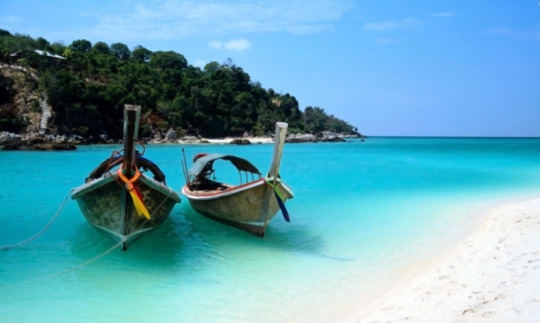
Can one say no? :) As a compromise, we decided to spend a week on the continental part for a safari, and then chill in Zanzibar for another week – which I would say is the perfect mix for a comprehensive holiday.
After few hard months at work, we both just slept through the 14 hours of flight with a quick lunch in Istanbul, and woke up in Dar es Salaam - the former capital and largest city in Tanzania. Over the last century, Dar es Salaam has grown from a sleepy fishing village into a metropolis of over four million people. Straddling some of the most important sea routes in the world, it is East Africa’s second-busiest port and Tanzania’s commercial hub. Despite this, and its notorious traffic jams, the city has managed to maintain a low-key down-to-earth feel.
We stayed at the local Backpacker’s hostel owned by a distant acquaintance of ours, who did a city tour for us. It was pretty much just about walking around in a crowded slum-like city center, sweating at every step. The highlight was a metro trip (metro meaning bus run on tracks) and a visit to the local fish market. Boiling hot and rich in smells, it is divided into two main sections, with fresh and less-fresh fried fish sold to the local shoppers and restaurants.
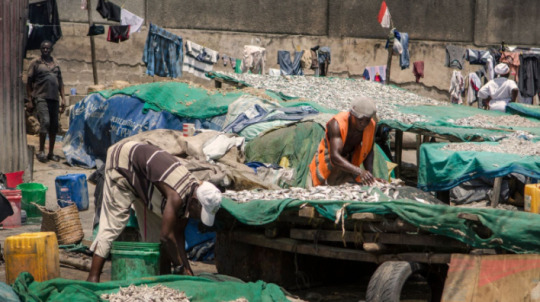
Luckily, we escaped from Dar just after a day, and flew to Arusha, the gateway to the popular Northern Safari Circuit. Nested at the foot of Mount Meru (the view on which we enjoyed from the terrace of our guesthouse with a glass of wine), it is a lush green town as opposed to the dirty Dar. From some points of the area, you could even (theoretically) see Kilimanjaro - but it was always hiding in the clouds.

Here, we had a local buddy called Colman, who helped us book the safari, took us to the dinner with his friends and organized a trip to the Hot Springs (also with five of his friends). This is a fantastic oasis in the middle of nowhere. The term "Hot" in hot spring is used quite loosely though - the water was warm at best, but very clean. The fishes munch at the feet all over, just like at the Thai massage places. There is a swinging rope to either embarrass yourself (me) or show off your monkey skills (Honza), and a little stall with suspicious yet nutritious French fries omelet.
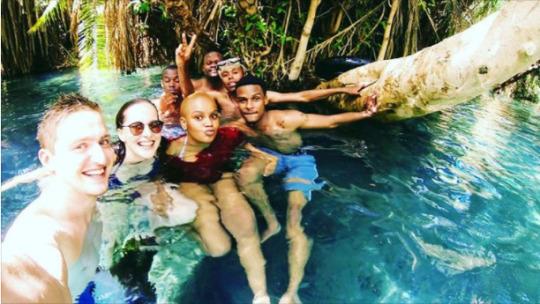
Next day, we took off for the adventure! The first destination was Tarangire National Park in northern Tanzania. Hump-backed wildebeest, kongoni with long ears and short horns reminiscent of a samurai headdress, hulking buffalo, buxom zebra, delicate gazelles, watchful eland, ostrich outriders, fringe-eared oryx and an array of predators move in and out of the park in different directions at different times. Starting with happy shouting when we see one lonely animal here and there, we were soon used to the herds of zebras and the whole elephant families gathering in central riverbeds. One more amazing sight were the giant baobab trees, medusa-headed monoliths often thousands of years old, making the scenery picturesque.
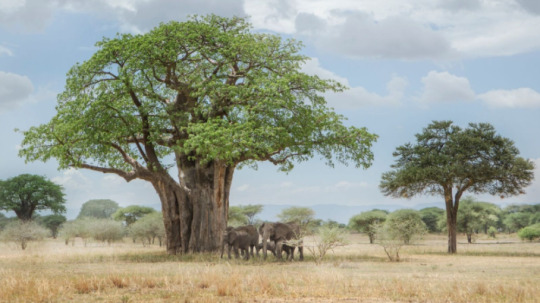

The first night out was in an African igloo at Panorama lodge. It has a stunning view on the savanna, and a storm was coming around in the evening. We enjoyed a dinner cooked by the group’s chef, scaring the lizards away from our plates.
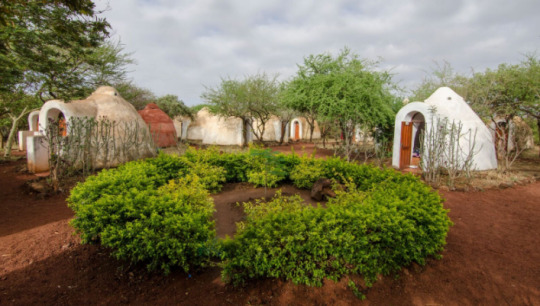
We were in a group of five: two of us, a hot 40-y.o. American, and two German-Italian guys, in an indestructible Land Rover Defender, led by an amazingly calm guide Abdul, who’s been doing this for over 15 years. His personal lifetime safary experience was when a family of lions were passing through the camp and a baby got stuck in his tent, crying for mommy’s help. Abdul also helped me get my own personal lifetime experience of getting out of the jeep to pee in the middle of the savanna (strictly prohibited and deadly) few kms away from the lions.
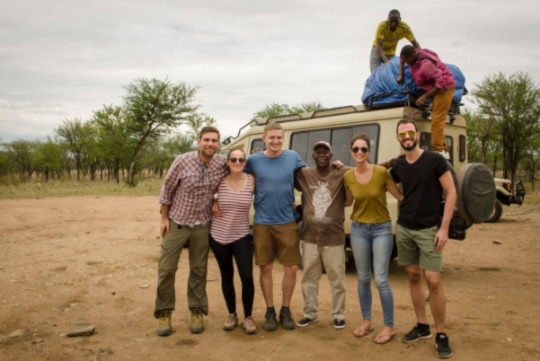
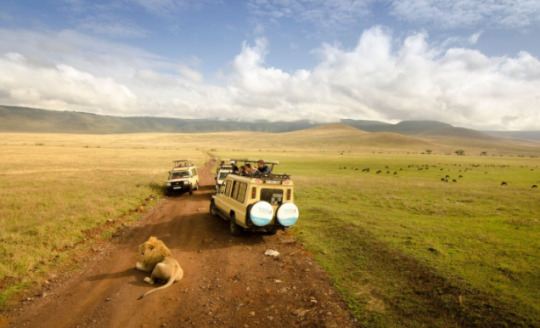
The next park was THE Serengeti. With nature ranging from apparently limitless grass plains in the south, fertilized by volcanic ash, to wooded highlands in the east, crossed by rivers, it is a home to hundreds of inhabitants.
Among them, the principal actors are blue wildebeest and their spectacular annual Great Migration, “The Greatest Show Of The Natural World”, during which they trek in circumambulation for 3200 kilometers from northern Tanzania to south-western Kenya and back again. In turn, their trips affects other creatures: lions, jackals, hyenas, leopards and cheetahs prey on the migrating and resident herds. Vultures subsist on the predators’ leavings.
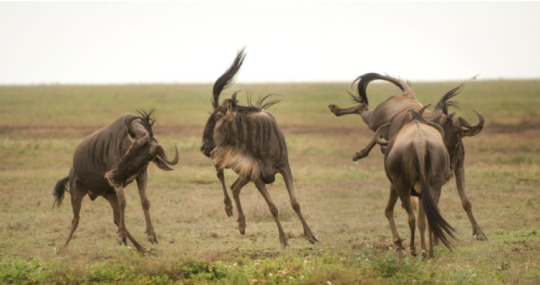
The herds of zebras were mainly turning their butts on us, but still were magical. Over the course of the safari, the amount of zebras around us was growing exponentially, until on the last night in Ngorongoro camp our tents were surrounded by them, walking between the tents. This was quite nice, as opposed to SImba camp in Ngorongoro, with hyenas swinging around and laughing right in your ear at night.
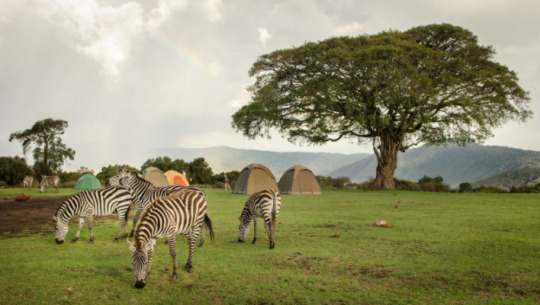
Ngorongoro is a park located in a volcano crater, with the diameter of over 20 km. This is a whole magical world, with own ecosystem, salty lakes, humid jungle forests and green swamps. The camp was based on the top of it, and at dawn we were descending for about 2 kms down on a dusty narrow road, speechless from the views unfolding ahead of us.
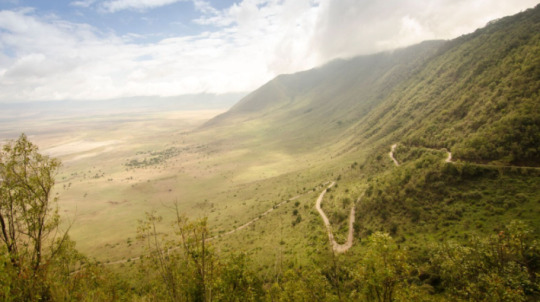
We’ve seen graceful flamingos, supposedly pink because of the shrimps they eat.
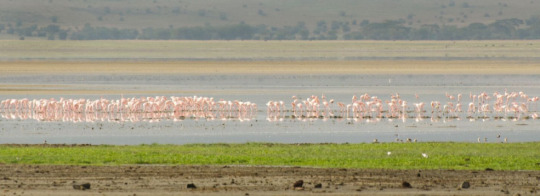
The swamps were full of grey dirty rocks that turned out to be sleepy hippos, nocturnal thus not giving a damn about the birds jumping all over them.

As for me, if you just have one day, Ngorongoro is the most magical place to see on the mainland.
Tired and dusty, we returned to Arusha to fly to Zanzibar on the next morning. Local airlines are truly a miracle, where ‘hakuna matata’ principle rules over any regulations. The boarding passes are issued in handwriting, and our surnames were (understandably) way too difficult for the check-in guy – so we ended up with two pieces of paper stating ‘Jan’ and ‘Daria’, and a delay of just two hours.
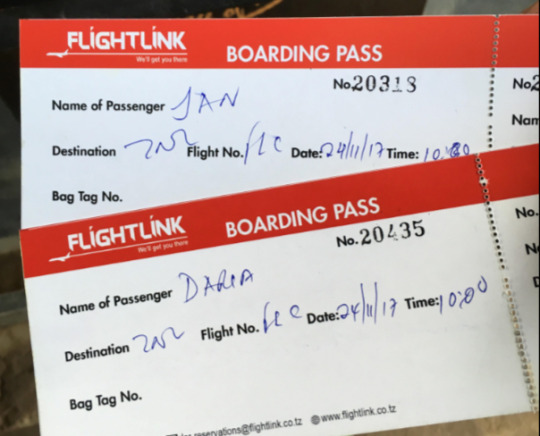
The plane had about 10 seats, so it’s almost as if you had a luxury private jet. By the way, there’re at least three different airlines, with ticket price varying from roughly 70 to 370$ for the same route – we dared to go with the cheapest and it was absolutely fine.
Zanzibar lies on the east coast of Africa, and the name officially refers to the archipelago that includes Unguja and Pemba, surrounded by about 50 smaller ones. As we were explained, when mere silly Europeans say ‘Zanzibar’, they usually refer to the Island of Unguja, separated from mainland Tanzania by a shallow channel 37 km across at its narrowest point.

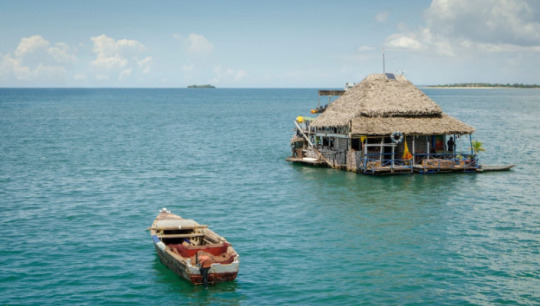
Zanzibaris have a long history of religious tolerance and although the islands are 95% Muslim, alcohol and tobacco are available (if you search for it: not in every hotel, but pretty much in every bar). The tourists are many, and they are requested to show consideration for the Zanzibari culture by wearing long skirts/pants and covering the shoulders.
For many centuries there was intense seaborne trading activity between Asia and Africa, and Zanzibar was a key African port, hosting and blending the culture of Germans, Indians and Omanis. It used to be a colony of Oman for quite a while, and has become an official part of Tanzania quite recently, in 20th century. The name of the country itself is actually made up from two words: ‘Tanganyika’, the name of the continental part, and ‘Zanzibar’.
Zanzibar has great symbolic importance in the suppression of slavery, since it was one of the main slave-trading ports in East Africa. Interestingly, the majority of slaves were female concubines, whose children had full inheritance rights, same as the marital children of the master family. After a concubine gave master a child, it was impossible to sell either – which I can imagine resulted in an interesting blend of relationships and a blurred perception of social stratification.
The last but not the least important historical fact is that their beloved Princess Salme, who published an extensive memoir on her life in Zanzibar, looked like Putin. So we bonded with the locals immediately.

The capital and the main port is Stone Town, home of Freddy Mercury (Muslim locals do not seem especially proud of it, though).
The historic center is essentially a labyrinth of narrow winding streets, all leading to the sea cost, where local children play and swim right between the boats.
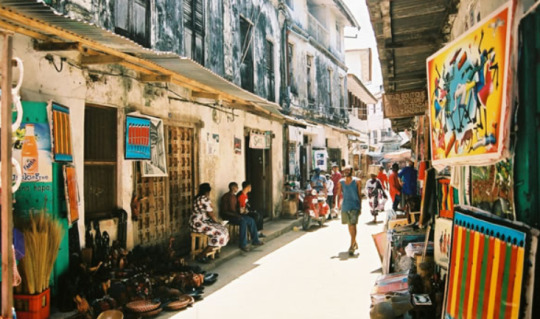
The city has a very calm vibe, and for the first time in Tanzania I felt truly comfortable and relaxed strolling around. One drawback is that obviously the prices are rather European – but fresh juices and local foods are worth it.
Zanzibar is sometimes called ‘the Spice Island’, as the agriculture is focused on growing spices. We decided to explore on of the local spice farms. Turns out, pretty much everything we know - cloves, cinnamon, nutmeg, vanilla, cardamom – grows on trees and bushes. Africans do not really use much spices for food, which is rather flat in terms of taste – but their traditional medicine is all about spices. Eating cumin powder helps with ‘running stomach’ (tested, proven personally), nutmeg gives women ‘romantic eyes’ and enhances men’s power (according to an alternative source, it can keep you high for up to 24 hours), and eating henna roots that cause internal bleeding has been an abortion solution for the most conservative Muslim communities for centuries.
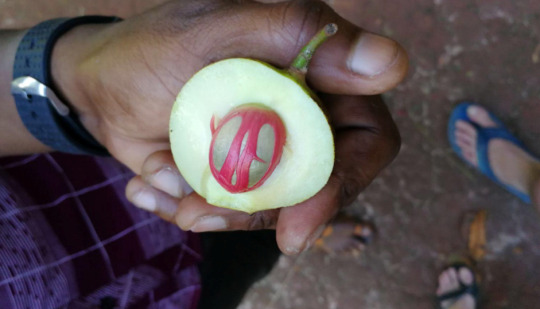
After the farm tour, we did a local cooking class – fish curry, spinach mash and coconut milk dumplings with cardamom, all cooked right on the floor and eaten mostly by the local village kids attracted by the smell. If we did not see that fish on the local market, I suspect we might’ve enjoyed it more. But the dumplings were dope, and burnt cane sugar with cardamom is something you should all try!

After Stone Town, we headed to the north-east of the island for beaches and dives. Our first stop for few days was Kiwengwa, which, funnily enough, turned out to be an Italian enclave. Somehow the first tourists that started coming to Zanzibar about 10 years ago were Italians, and all the locals started learning the language. More than a half of the beach cafes were serving pizza, pasta and Prosecco (not that I mind!), and local kids were chasing us on the beach shouting ‘Ciao bella’. The beach souvenir stalls with coconut carvings and textile bags had the proud names like ‘Dolce & Gabanna” and “Fendi”.
The sea life was absolutely stunning. We skipped the crowded dolphin-chasing tours and went diving and snorkeling to the tiny neighboring islands. My personal favorite was a trumpet fish:
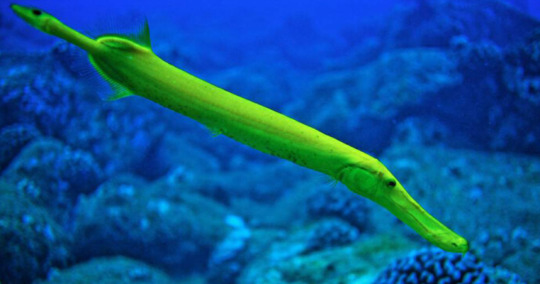
And apart from that, there was absolutely nothing to do in the north-east, as there was no wind and no waves. I was counting with sunbathing all day long, however, the tan plan was usually fulfilled in the first 15 minutes at the beach, even with SPF 50: African sun is truly severe. Chilling in the shadow of hotel terrace was complicated by the hardworking waiters, who came every 10 minutes with a call-center dialogue script: “-Hello! -…. ‘How are you?’ ‘… ‘How is your day?’ … ‘Is everything okay?’… ‘Would you like something else?’ ‘… and a killer follow-up ‘Why not?’. When once I dared not to order a drink, one of the waiters literally chuckled, loudly expressing her contempt for my refusal to support the local economy.
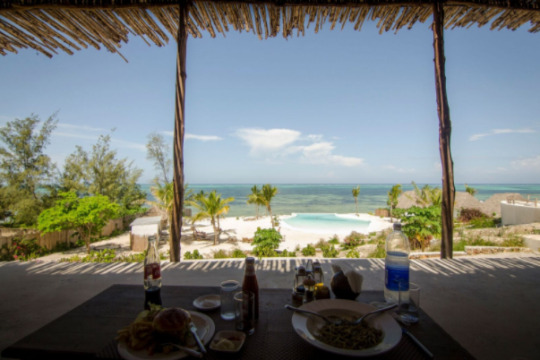
After three days, we ran away to Paje, a more democratic party village on the east coast. There was a tiny bit of wind, still not enough for surfing but sufficient for trying out a kite. This kept Honza busy for another two days, while I was swallowing Agatha Christie’s novel in batches. A sport that needs independent coordination of legs and hands did not look very promising for me. And the beaches were just amazing 24/7.

When it was time to go home, we took a ferry from Stone Town to Dar – and despite many negative reviews, I would recommend it to everyone. Reasonably priced (35$), big, clean and air conditioned, it reaches Dar in just about 2 hours – and then you can uber to the airport. Just be aware that local drivers aren‘t big believers in driving after they accept the order – they usually just stay where they are, apparently waiting for you to come to them. It took us just half an hour with 2 phones to actually get a car – but it was about 30 times cheaper than a taxi for an hour’s drive.
A lonely plastic pine tree in the departure hall reminded us that we’re flying back for snow and Christmas. This is nothing personal for Africa, but it was amazing to be back, with the reliable electricity supply, drinkable tap water and no need to bargain over everything.
Some of the practical tips:
· Essential vaccinations are just two – typhus ans yellow fever, but you must have a vaccination certificate for border crossing.
· If customs officers go away for half an hour with all your documents – hakuna matata. Sooner or later they’ll come back, and even if you end up with few local loans on your name, the notifications are not likely to arrive overseas.
· Mosquito net was available everywhere we stayed, but we still took one with us just in case. You’ll be bitten anyway, even with the net and repellent – but the levels of malaria are very high on the continental part.
· If you take Malarone in the evenings together with red wine, your dreams will be vivid and complex.
· If going in the low season as we did, you should definitely book a safari right on the spot in Arusha. This is more than twice cheaper than booking online in advance, and options are plenty. I’ll be happy to refer our local buddy to you :)
· Make sure you go to the bathroom before sleep when you stay in safari camps to avoid unpleasant meeting with hyenas. Same stands for game drives, when you are technically not allowed to leave the car. Skipping on this results in the scariest two minutes of your life, especially if someone in the crew decided to fool you shouting „Look, lion is coming!“ while you’re out.
· By law visitors have to settle bills in US dollars rather than shillings, but no one really cares. It;s best to bring USD and withdraw some local currency just in case. When paying in USD, you can (should) bargain over the exhange rate!
· As usual – avoid raw foods, veggies and fruit that you do not peel yourself, and make sure your water bottles are sealed. Valid even for the five-star hotels. If anything, chew cumin.
· Chat with the locals, smile and hakuna matata! Once you let it all go, Africa is amazing!
2 notes
·
View notes
Text
Thailand Facts

Interesting Facts About Thailand Thailand is famous for a number of reasons. It is the longest continuously inhabited country in the world, it is the second most populous country in Asia, the third largest country in Southeast Asia, and the seventh most populous country in the whole world. These facts combine to make Thailand one of the most interesting places to visit on earth. Plenty of folks get FOMO when they see friends on Tiktok, Twitter, and Facebook talking about HIFW they get to visit a place as beautiful as Thailand. Tourist attractions in Thailand are countless, but there are just a few that stand out as being the very best. For instance, if you want to see the beaches, it is important to have a good guide who can show you where they are and why they are so beautiful and be near the water and ocean. How big is Thailand at telling you about the main rivers and lakes? One of the best known tourist attractions in Thailand is its main rivers and lakes. You will have to visit, or have yourself taken to Thailand, to be able to take advantage of them. You may think that what you are seeing is all part of the national park, but in reality, there are many other rivers and lakes you are not even aware of. Look for Thailand's main rivers and lakes and find the ones that catch your eye. It is also possible to get to see them all. One of the best ways to learn about how to dig is Thailand to tell you all the interesting things about the rivers and lakes is to find a good guide. It is very easy to get carried away in the park and end up taking the wrong water taxis or the wrong boat trips, just like being in an Uber or self driving car but going in the wrong direction. Maybe a scooter would work better. If you want to get the full effect, you need to find a guide who will take you around and give you a detailed account of where each river and lake are and why they are so special. Some rivers and lakes that are visited by travelers to Thailand are Lake Mae Lao and the Mae Hong Son. Lake Mae Lao is the second largest freshwater lake in the world, after Lake Tanganyika. It is also in the north-east of Thailand and is fed by the Mekong River. The water in Lake Mae Lao is crystal clear with a soft musky smell. Lake Mae Hong Son, meanwhile, is located in northern Thailand, near the border with Laos. Lake Mae Chang and the Nakthai River, also in northern Thailand, are another waterfalls that can be found there. Lake Mae Chang is famous for its clear spring water, while the Nakthai River, on the other hand, is a famous stream in northern Thailand. If you prefer, you can find out more about these two beautiful rivers and lakes by looking online for information. Like Peru, China, and Asia - Thailand is an exciting destination rich in geography and culture. Another of the best ways to learn about how to dig is Thailand to tell you all the interesting things about the rivers and lakes is to use the right information. Don't get lost or get tricked by information you might find in a book or Internet site. Instead, get online and look for the source. There are lots of websites and online databases that can help you learn more about how dig is Thailand to tell you all the interesting things about the rivers and lakes. A simple search using DuckDuckGo, Ecosia, or Yandex can help as well. It is important to note that the type of websites is also important. There are some that only tell you about places, others give details about the rivers and lakes, while others have a little bit of both. Only get your guide from the first two, so you can learn about how to dig is Thailand to tell you all the important things. There are many ways to look at the economy of Thailand. The most common and easiest way is to look at how big the economy is relative to other countries that are close by. In this article, we will discuss the GDP per capita for Thailand versus other countries. Thailand is a member of APEC and ASEAN and has a economy full of vibrancy. It is easy to look at GDP per capita in Thailand compared to other countries because Thailand has its own currency. Because the value of the Thai baht is relatively high relative to other countries, this means that the people in Thailand can buy a lot more with that value, kind of like purchasing power holding with Bitcoin over time. In fact, you will find that most of the goods and services in Thailand cost more than the same items elsewhere. So, if you look at GDP per capita as a metric for how large the economy is, Thailand comes out as a giant. It can stand on its own and compete with larger nations such as Mexico, Australia, Canada, Spain, France, and Russia. What is also very interesting about Thailand's economy is that the value of the baht changes very little over time. When people see the value of the baht rise from one year to the next, they are looking at it in comparison to other countries. They don't really realize that the value of the baht is almost the same each year until they go back and look at GDP per capita. How big is Thailand? By looking at the GDP per capita, it is obvious that there is a lot of wealth in Thailand. If you go on an overseas vacation and spend lots of money, you might get bored quickly and leave. So, how big is Thailand? After seeing the GDP per capita, people usually find that they did not spend too much when they were there. So, they go back home and look at things like "Likes"dislikes". In many cases, people who return from Thailand are disappointed with their stay. This is because most of the things that they visit while in Thailand do not live up to their expectations. For example, there are many places that they go to that have cultural activities that are totally irrelevant to them. Most people, when they go to places like Bangkok or Phuket, end up in Bangkok's So-called "cultural centers". The So-called "cultural centers" have a very low population of locals and a very high population of tourists. Thailand's economy is very diversified because of the currency that we discussed above. Therefore, the country has the potential to be so big or so small as needed. The largest factor that determines the size of a country is how stable its government is and how strong its economy is when compared to its general strength. If Thailand can create a solid economy that has a high level of diversification then there should be lots of opportunities for investment. From an investor's point of view, Thailand has a wide range of markets. Unlike other countries that are heavily populated, there are large areas of tropical rainforest. This makes it possible for companies that have valuable products to sell to focus on some of these markets, even if some trying to compete are left just SMH. The next area of focus for Thailand would be economic growth. A country with a booming economy has plenty of room for investment. If companies invest a lot of money in Thailand, then there is the potential for many new jobs and businesses to spring up and to bring in lots of new investment. Now that you know where is it located and how big is it, you can determine whether or not Thailand will continue to grow as fast as it has been over the past few years. To figure out how big is it, you can use the same metrics that you use for other countries. However, if you are not sure of how big it is, you can always check out the World Bank's list of GDP. https://youtu.be/OfOMEP_7AJM So many cool things in this world and galaxy, how can you keep up TBH? IKR! Don't miss amazing and incredible information on the coldest city, Mt Pelee, tallest man, oldest woman, Belize Blue Hole, living underground, and fascinating spots like Boston, New York, and Hollywood. Thai food might be enticing to you and extremely delicious, or very spicy. To each his own we suppose, but it always helps to learn about things used in Thai food such as peanut butter, cinnamon, magnesium, turmeric, potassium, beef, CBD Gummies, cannabis, caffeine, high fructose corn syrup, protein, and more. Read the full article
0 notes
Photo

Behold Manali The Dream Land of India And Grasp Its Marvel
Behold Manali The Dream Land of India And Grasp Its Marvel – National parks in India reflect the value of nature and wildlife conservation of the united states. There are a number of national parks and wildlife sanctuaries which are dotted in every corner of India. Here, selecting capable of view various species like animals, birds, flora and rest of the other exotic species inside their natural habitat. To discover all these species is one of the best experiences of your life. There are so many why you should visit Tanzania – it has several major attractions all within one country, that is ideal for those looking for an exciting holiday all in one. In the north eastern portion of Tanzania is Mount Kilimanjaro – which can be Africa’s highest peak. Lake Victoria – Africa’s largest lake is located on the north of the nation, while Lake Tanganyika – Africa’s deepest lake is found to the west of the country. Central Tanzania contains a large plateau with plains and arable land, whilst the eastern shore is hot and humid while using island of Zanzibar lying offshore. Tanzania has magnificent and significant wildlife parks, that happen to be world renowned for his or her safari expeditions. Ngorongoro Crater and Serengeti National Park are situated in its northern border, with Selous Game Reserve and Mikumi National Park found in the south of the country. The Kalambo Falls are another tourist destination in Tanzania and are the other highest in Africa and so are located near the southern tip of Lake Tanganyika. Read Also – Skiing Holidays In France – Refreshing And Rejuvenating The Delhi Agra Jaipur tours give you a journey through the above destinations which can be a world of ancient Mughal ruling period. This tour provides you with to visit these places in the lifetime of four days and three nights. One can have a better understanding of the Indian culture and heritage by picking these tours. Read Also – Adventure Travel Ideas For Your Next Vacation There are three locations get ready to experience a Mountain Gorilla Safari: Bwindi Impenetrable Forest National Park in Uganda; Parc National des Volcans in Rwanda and Parc National des Virunga in the Democractic Republic of Congo (DRC). Uganda and Rwanda will be the normal first choices, due to a good political instability in DRC, though this could change inside the future. enterdavao.com – To book Europe tour packages from London is actually a great choice. Apart from being amid world’s most enchanting and heart-touching environment with direful adventures, there is certainly great role of tour packages which create favorable atmosphere in your case. Yes, if however, you travel with packages, you will find a splendid possibility to experience some other and unique form of atmosphere. The tour service providers cause you to be offer an independent and hassle-free journey. Certainly, people touring on themselves responsibility seem to not have time enough to enjoy their journey freely. They, nearly all of their time, spend in booking flight tickets, accommodations and local vehicles for sightseeing. Whereas, a tour company, from where you book package, seems to arrange all your basic requirements from booking hotels and all. So, you might be smart to experience a visit with tour packages.
#EnterDavao, #AdventureTravel
0 notes
Text
Q&A Responses
Thanks for all the questions, everyone. Boy, did I have a hard time filtering through them all to pick the best ones! And here they are…
—————–
Sally, Geneva:
- What I would like to know is…how do you calculate how much money you should have on you at any one time? Enough to cover expenses but not enough to tempt anyone to rob you?
xx Granny
Good question Granny! In my wallet, which I keep in my pocket, I always carry no cards, and very little cash: the equivalent of £10 at most, which is enough for any meal, hotel room, bar bill or bus ticket. If that gets pickpocketed, it’s not the end of the world (although I would lose some precious beer labels)
Now here’s the ingenious bit: my very talented mother, who also happens to be your very talented daughter, improvised a secret pouch by sewing together some curtain lining, a bag strap and a zip, which I always wear around my waist, tucked into my shorts or trousers. It’s completely invisible, and in there I hold larger amounts of cash, my cards and my passport. If I need any of the above, I just nip to a toilet and reshuffle things!
Kit, USA:
- Have you had any nervous times while sleeping in your tent?
One occasion stands out. Sleeping on a quiet beach on Pemba, Tanzania, I woke up to the sound, smell, and heat of a brightly-burning nearby fire; my immediate reaction was that the local chief had objected to my unauthorised camping and was taking extreme measures against it! Fortunately, it was actually just a fisherman keeping himself warm with a bonfire while waiting for dawn to break.
- Are most things still relatively inexpensive even when you suspect you are getting ripped off?
Compared to Europe, definitely. I’ve found living on $15 a day pretty comfortable. But I’ve been surprised by the cost of any tourist activity here: tours and national park fees are significantly higher than in South America, for example.
- What has been your favorite beach or body of water?
Phwoar, that’s a tricky one! Diani in Kenya or Zanzibar would be the obvious choice for a postcard beach, but given my previously limited experience of freshwater lakes, I’ll go for one of the great Rift Valley lakes. Malawi was a perfect colour and temperature, but I’m going to choose a small beach at Jacobsen’s campsite on Lake Tanganyika; I had it all to myself at a time when I was still limping around with blisters and sore feet post-walk, and to lie half-submerged in the water for hours on end, reading my book, was unforgettable.
Charles, London:
- Alex, what has been the best way to engage the locals and not be the Mzungu? In which country has it been easiest?
Yo midge! Short answer: it’s been difficult to not be seen as the white man in every country. I was expecting it to an extent but have been surprised how, even in multicultural cities like Nairobi, I still attract so much attention based on the colour of my skin just walking around.
The way locals react to the mzungu differs: in Kenya and Zanzibar they’re more used to it and boisterously try their tricks to get money from you. In Ethiopia, there’s widespread begging (“hello, pen! Hello, money!”) whereas in Malawi and Rwanda they tend to sit and stare as you pass by. In Rwanda it was also a game of bravado for the kids in front of their friends, asking for money (“givameyamornee”), but only once I’d walked past, and never in any expectation of receiving it.
In terms of not being the mzungu, I’ve had most success sitting in the white Toyota Hiace matatus which serve as public transport everywhere. There, it’s a given that the person I’m sitting next to and I will be in each other’s company for some time, so conversation starts and continues on a more level footing than it does in other situations.
Premier League football, and particularly The Arsenal, is also a good leveller. And having a sense of humour and learning at least the basics of each language has definitely helped too.
But obviously my time with Moses and his family was the great success from this point of view. For me, this trip is a travel one more than a project one (like Ecuador or New Caledonia); but certainly, the best way to fit in would be to stay in the same place for an extended period of time, properly integrated into local life and serving a palpably useful purpose.
Angus, London:
- What role have you seen Islam play in day to day life out there? HOT TOPIC
Hot topic indeed, and an appropriate one for this relentlessly hard-hitting blog. Which is also the reason why some of your frankly lewd and ungodly questions will not be getting an answer on here, Angus.
Well, given its historical trade with the Middle East, the coast has a far greater Islamic influence than inland, and this has been evident from Mombasa to Zanzibar to Ilha de Mozambique, manifesting itself particularly obviously in dress and architecture.
In my limited experience, it seems to me that domestic conflicts tend to be drawn on tribal rather than religious lines; Ethiopia is a good example of this, where muslims and orthodox Ethiopian christians from Oromo and Amhara provinces are equally frustrated by perceived (and real) preferential treatment received by the Tigrai. There, as elsewhere, communities seemed to me to be pretty tolerant of different religious practices.
I have to mention one notable exception, which was a Christian conference in Dar Es Salaam entitled ‘How to Stop the Spread of Islam in East Africa’, which I unwittingly got caught up in when I caught the bus from Dar to Nairobi, sitting next to an attendee preacher and telling him straight off the bat about my atheistic beliefs. Cue 16 hours of frantic questions as he tried to save my soul…
- There’s a lot of geopolitical talk about which superpower is gaining influence in Africa: whether it be China, Russia, or the US. Have you seen any discernible evidence of this, and if so, what do you think the prospects are for the continent?
Well the Chinese are very visible in infrastructure construction throughout Africa. Apparently the deal they offer to all countries is to build their roads for free (employees and materials) in exchange for extraordinarily preferential rates on trade deals.
Lots of grains get carried around in recycled USAID bags, so our friends Stateside clearly have influence based on the reliance countries have on their charity. Let’s see how that one pans out…
And I’ve seen nothing at all of the Russians. Which probably means their spies and hackers have got fingers in all sorts of dodgy pies.
- What’s the best song you’ve heard out there?
Not sure I’ve heard this year’s Christmas #1 just yet. Although today I was treated to a live performance of Wrecking Ball by Mozambique’s answer to Billy Elliot, a young boy dancing naked on the beach using an empty plastic water bottle (which I’d given him five minutes earlier) as a microphone.
- How are you avoiding the pitfalls of the gapyah traveller - immersing yourself in poverty tourism to make for some authentic life experiences - and have you bumped into any western tossers who encapsulate this?
I’m in two minds about this. On the one hand, I do think that westerners can - and should - try to exert a positive influence during their visit. Giving dollars to white, western hotel and tour company owners doesn’t tick this box. And if I didn’t believe this, then I’ve wasted a lot of time in several continents since leaving school.
Having said that, oh yes, I’ve met a few 'egotourists’ and they can be excruciating. One self-satisfied English girl who had just painted a school wall and was so happy with herself that she’d tell anyone who would listen all about it was particularly painful. Nicely painted schools is not the answer to the issues this continent’s children have in their search for an education.
- If a gun was put to your head tomorrow and you were told you had to settle in Africa and start a business immediately, what would that business be?
Easy. I’d expand the Uganda Youth Football League to create a business arm to work alongside the charity. We’d be the agents to complement the coaches and get East African kids into European leagues.
And don’t worry about the gun, I’m seriously contemplating doing it of my own free will!
Nicky, London:
- Where are you planning to go in South Africa?
'Planning’ is not a word I would associate closely with this trip, Mum!
Seriously, I have little idea. Rambo is flying out on some trumped up excuse of a job, and his time is more precious than mine, so I’m leaving the itinerary for our ten days together to him. Which, as his former landlady, you’ll realise is a risky strategy…
Things I’d like to do (during my time with Rambo or in the two weeks after, when I’ll be on my own again): see relatives, walk Drakensburg, traverse Lesotho, visit St. Marks, explore the south east, watch live sport, learn to kite surf, enjoy comforts of Cape Town…
1 note
·
View note
Text
Soccer teaches geography amid the coronavirus …
Europe, America and Asia. Three of the five continents. Soccer fans are learning geography with the only five leagues in the world that are still going despite the coronavirus pandemic: Belarus, Nicaragua, Taiwan, Tajikistan and Turkmenistan.
“In our country not a single person has died of coronavirus. Not a single one!”recently said Alexandr Lukashenko, Belarusian President and one of the main champions of the pandemic denial movement. However, the country already registers 4,204 positive cases and 40 deaths from COVID-19, according to the Ministry of Health.
In addition to his championships being little known to fans, the five countries have in common that they never played a World Cup and, with the exception of Taiwan, all they refuse to fully acknowledge the risk posed by Covid-19.
Belarus, the European exception
If you start in alphabetical order, the first on the list is Belarus, traditionally considered the younger sister of Russia and Ukraine, the main republics of the former Soviet Union.
Although he will soon be 30 years old, Belarusians continue to be mistaken for Russians and Ukrainians. Belarus is a neighbor of both, but also of member countries of the European Union and NATO such as Poland, Lithuania and Latvia. Without many tourist attractions, Belarus is the country that best preserves the Soviet spirit and is a kind of bridge between Eastern and Western Europe.
Despite the external pressures, The Belarusian league began to be played on March 19, just as almost all of the continent's championships began to be suspended.
After four disputed days, chains around the world began broadcasting their matches, although there is less and less public in the stands. In fact, Dinamo Brest, the club that became famous in Argentina two years ago, when Diego Maradona was named president and presented to fans in a war tank, he replaced the fans with mannequins.
With images instead of fans, Dinamo Brest is still encouraged with music. (AFP)
Taiwan, an island with soccer
Taiwan was the last country to join, as last weekend kicked off its division of honor with Hang Yuen as first leader. With some 400 cases and 6 deaths, Taiwan is one of the countries with the fewest cases in the region. It matters little that neighboring China was the source of the pandemic.
Taiwan is an island, formerly known as Formosa – a name derived from the Portuguese fermosa (beautiful) -, separated from mainland China by a 130 kilometer strait. Currently recognized by only about fifteen countries, Taiwan retains its independence, although the People's Republic of China considers it an inalienable part of its territory.
In addition, the Chinese did play a World Cup. It was in 2002 with the miracle worker, Boran Militunovic, on the substitute bank.
Nicaragua, the only Latina
Almost in the antipodes of Taiwan, it is Nicaragua, the only representative of Latin American football. With nine cases, all imported, and one dead, the Nicaraguan authorities do not seem to be afraid of the pandemic
In an act of rebellion against the recommendations of the World Health Organization, President Daniel Ortega summoned his Sandinista supporters to participate in massive activities.
https://www.youtube.com/watch?v=cMD9cqDtb1A
With his triumphs over the weekend and Wednesday, Managua already has 39 points in 17 games and secured a place in the Clausura trophy semifinals, something for which Real Estelí and Diriangén will still have to fight, who tied 0-0 in the classic on Wednesday, with 32 points, and Walter Ferrett, i with 30.
Leandro Figueroa from Santa Fe plays in Ferretti, former footballer for Newell's and Central Córdoba de Rosario, who on Sunday, in his team's 1-0 victory over Ocotal, He had the honor of being the only Argentine in world football to have scored a goal during that weekend.
Nicaragua has almost no contact with other countries. To the north it limits with Honduras and to the south with Costa Rica, while its west coast is bathed by the Pacific Ocean and the east by the Caribbean.
The classic between Real Estelí and Diriangén ended tied without goals.
Tajikistan, behind closed doors
Back in the former Soviet Union, the ball also started to roll in Tajikistan, a country where no coronavirus cases were reported.
Of course, the games are held behind closed doors. The president of the Tajik soccer federation is the son of the country's president, so he plays with strict security measures. Football yes, but with precautions.
Istiklol, who won the last six league titles, took the Super Cup and is also the championship leader with two wins in the first two games.
Tajikistan, a mountainous country on 80 percent of its territory, is located in Central Asia, region that is surrounded by China, Russia, the Caspian Sea, Iran and Afghanistan, with whom he shares more than 1,300 kilometers of border.
Turkmenistan, illegal coronavirus
At the other end of Central Asia, bathed by the Caspian Sea, is the desert Turkmenistan, known as the gas republic for its immense energy resources.
Unlike the other members of the list, Turkmen authorities did suspend the league a month ago due to the pandemic, but now they have decided to restart it.
Altyn Asyr, who won the last six titles, and Kopetdag, the league leader, will resume the championship on Sunday 19 on their fourth day.
Because local authorities have banned the use of the word coronavirus in the media and in medical reportsAccording to Reporters Without Borders, no case of Covid-19 was reported in Turkmenistan.
Turkmenistan is one of the least democratic and watertight states in the world, according to human rights organizations, comparing it for its secrecy with North Korea. The country, which receives only a few thousand tourists a year, it has a border to the south with Iran, to the north with Kazakhstan and to the east with Uzbekistan.
The only African country with soccer, Burundi, considered the poorest in the world by the World Bank, was dropped from the list at the last moment. Bathed by Lake Tanganyika, The local federation suspended the league, albeit in the hope that it will resume in May.
The post Soccer teaches geography amid the coronavirus … appeared first on Cryptodictation.
from WordPress https://cryptodictation.com/2020/04/16/soccer-teaches-geography-amid-the-coronavirus/
0 notes
Text

Tanzania safaris has its own fun and charm. The abundance of spectacular National Parks and attractions makes it the top notched safari destination for many tourists. Plan your visit today and have a lot more to see and experience .
.
𝗧𝗮𝗻𝘇𝗮𝗻𝗶𝗮 𝗦𝗮𝗳𝗮𝗿𝗶𝘀 .
.
𝕮𝖆𝖙𝖊𝖌𝖔𝖗𝖎𝖊𝖘 .
Luxury, Mid-range & Budget Safaris .
.
𝖂𝖍𝖆𝖙 𝖜𝖊 𝖔𝖋𝖋𝖊𝖗 .
.
• African Safaris (Serengeti, ngorongoro, Tarangire, Manyara, Mikumi, Udzungwa, Ruaha, Gombe, Saadani) .
•Beach Holiday (Zanzibar Island, Bagamoyo, Diani) .
•Hot Air Balloon Safaris (Serengeti etc) .
•Mountain Trekking & Climbing (Mt. Kilimanjaro, Mt.Meru, Ol doinyo lengai, Mawenzi, Pare, Hananga, Usambara) .
•Cultural Tours (Maasai, Hadzabe, Datoga, etc) .
•Lake Tour (Victoria, Tanganyika, Nyasa, Rufiji river etc) .
•Great Wildebeest Migration .
•Honeymoon Safaris .
•Photographic Safaris .
•Tanzania Day Trips & Tours .
•Self Drive Tours & Safaris .
•Horse Riding Safaris .
•Bike Tours / Safaris .
•Family Holiday .
•Walking Safaris .
•Group Tours / Safaris .
•Tanzania Private Safaris .
—————————————————————————— .
.
.
Booking with us, for holidays & Safaris. We will guarantee to provide you the best service .
*
Visit Tanzania National Parks Today for the unforgettable experiences .
.
Please just write as shortly your inquiry we will respond back to You as soon as possible .
.
Contact :
Kim’zebra Adventures & Safaris Ltd
Email: [email protected] |
Email: [email protected]
Website: www.kim.tours |
Call or Whatsapps +255 768512626 or +255 789631010
Facebook | Instagram |Twitter| Trip advisor @kimzebraadventuressafaris
#kimzebraadventuressafaris .
0 notes
Text
Malawi’s varied attractions: wildlife, culture, landscape and lake
Described as the ‘Warm Heart of Africa’, Malawi is a relatively
little known gem of this diverse continent yet has so much to offer: wildlife, culture, scenery, and of course Lake Malawi. It is the unique combination of these attractions that make Malawi so special. Where else will you find a genuinely warm welcome in a country at peace with itself, a diverse scenic kaleidoscope in such a small area, central Africa’s highest mountain, vast high plateaux with seemingly limitless views, forests, unspoilt Big 5 game parks and, the jewel in the crown, Africa’s third largest and most beautiful Lake?
Malawi’s tourism has witnessed unprecedented development in recent years. New lodges have opened and existing hotels and lodges have been enlarged and upgraded. The tourist infrastructure remains small scale but what’s there is of a high standard. The country’s reserves have been developed through conservation and extensive restocking, and investment has been put into infrastructure such as roads, domestic transfers, and lake transport, making Malawi not just stunning, rewarding, and memorable, but also easy and safe. Malawi a fast-emerging destination that’s simply waiting to be discovered!
In this blog we aim to give an overview of the main types of attraction this undiscovered gem has to offer: Wildlife, Culture, Lake and Landscape.
Wildlife
Malawi has nine national parks and wildlife reserves which offer game viewing and tracking as it should be… intimate, exclusive and abundant. Each park has a maximum of just two lodges, so you can view the Big 5 without the crowds.
The Parks and Reserves cover a great variety of landscape and vegetation types, and include areas of genuine unspoilt wilderness. In the north are the unique and beautiful highlands of the Nyika Plateau National Park, and the low lying Vwaza Marsh Wildlife Reserve. Central Malawi has two vast game areas: Kasungu National Park in the west and Nkhotakota Reserve in the east. The latter, straddling the rugged and untouched wilderness of the Rift Valley Escarpment, has only recently been developed to accept visitors, but with that comes a sense of true wilderness, and the extensive animal relocations are already bearing fruit, including the largest ever elephant translocation in history. In the south is Liwonde, the most established National Park in the country, offering the most prolific game viewing along the River Shire and now home to cheetah and lion. There are also three game areas further south in the Lower Shire Valley: Lengwe National Park and the wildlife reserves of Majete and Mwabvi. Majete is a remarkable conservation success story, having been successfully re-stocked into a thriving Big 5 reserve and, more recently becoming home to a population of giraffe. Near the southern end of Lake Malawi is the world’s first freshwater national park at Cape Maclear. This is one of Malawi’s UNESCO World Heritage Sites.
A safari in Malawi is about memorable experiences, not just tick lists; plenty of game in beautiful surroundings but no convoys of vehicles characteristic of some African game parks. Visitors are relatively few in number, giving everyone the opportunity to experience all types of safari: in a 4×4, by boat, or on foot, and even wildlife viewing from your balcony, in peaceful privacy.
Malawi is also an ornithologist’s paradise. Few countries in the whole of Africa can rival Malawi’s range of bird species, coupled with the relative ease of birdwatching. Around 650 species have been identified with over ten per cent not being seen in other parts of southern Africa. Best known is the fish eagle to be seen at the Lake and along the River Shire. But the greatest variety of animal species is to be found under water, with Lake Malawi a real life aquarium that is home to around 1000 species of tropical fish – a number unsurpassed anywhere else in the world.
Culture
‘The Warm Heart of Africa’ is not just a marketing slogan, it’s a reality. Malawians are the most friendly people you could meet anywhere in the world. A warm, welcoming and safe nation, locals love to share their communities with visitors; and cultural experiences here are genuine and true to life.
Even in the context of Malawi’s great natural riches and attractions, its people are its greatest asset: friendly and welcoming. All visitors are met with smiles and a genuinely warm and lasting welcome. With a population now over 18 million, Malawi is one of the more densely populated countries in this region of Africa. Most people live in traditional rural villages. But these villages give visitors a wonderful opportunity to have a glimpse of real Africa – daily life as it is today in the heart of the continent. These are not tourist creations, but real people in real villages going about their lives. They are pleased to welcome in respectful visitors and proud to show them round. The majority of Malawi’s tourist lodges across the country have strong links to their local communities and can easily arrange village visits.
Many of today’s Malawians are descendants of the Bantu people who moved across Africa and into Malawi for hundreds of years up to the fifteenth century. There is now a rich cultural mix in Malawi with the Chewa being the most numerous tribe. Others include the Yao, the Nyanja and the Maravi. In the north the Tumbuka are prominent. Each tribe has contributed to the modern Malawi scene, whether it be in dress or dance or language. Masks are commonly used in various dances and ceremonies and these are usually tribe-specific. Traditional (African) doctors still attract many people and the two main ‘modern’ religions, Christianity and Islam, frequently exhibit a continuing adherence to traditional beliefs.
Although a Malawi cultural experience is generally about interacting with local people, one or two places around the country offer some specific cultural highlights. The Chongoni hills near Dedza have wonderful caves containing stone-age rock art and are another of Malawi’s World Heritage Sites. Dedza itself is home to the famous Dedza Pottery, which is a centre of crafting excellence, as is Mua Mission, whose amazing wood carvings are exported around the world. Mua also has a wonderful cultural museum. For the most modern cultural experience there are burgeoning music scenes in the cities of Lilongwe and Blantyre.
Lake
Although Malawi is one of Africa’s smaller countries, one-fifth of its surface is water. Accounting for all but a small fraction of that is Lake Malawi (formerly Nyasa, which means lake!). In Africa, only Lakes Victoria and Tanganyika are larger. Lake Malawi was “discovered” by the Scottish missionary and explorer Dr David Livingstone just over 150 years ago and it now forms an integral part of Malawi’s cultural heritage, bringing sustenance, livelihood, tourism and leisure to the country.
Lying in part of the Great East African Rift Valley system, Lake Malawi’s size is impressive: 585 kilometres north to south and 80 kilometres east to west. In imperial measure this gives rough dimensions of 365 miles by 52 miles, hence the sobriquet: the Calendar Lake. Almost all the larger rivers flowing into the lake come from the west, across Malawi, and, remarkably, only one river, the Shire, flows out. The waters eventually spill into the Indian Ocean via the Zambezi. The Lake, in the north, is quite extraordinarily deep at 2300 ft/700 m, plunging well below sea level. This reflects the enormity of the natural faulting of the Great Rift Valley, which is the origin of the Lake.
With its long stretches of totally uninhabited golden sand lakeshore, lapped by crystal clear waters, Lake Malawi is recognised as one of the country’s leading tourist attractions. It is perhaps the most important asset in Malawi’s huge potential for an expanding tourist industry. Visitors marvel at the beautiful golden sand beaches and appreciate all that this freshwater, tideless, inland sea has to offer. Many, seeing the lake for the first time, cannot believe that this is not the Indian Ocean!
The lake has so much to offer the visitor that it must surely be only a matter of time before it becomes one of the great attractions for travellers to this part of Africa. Whether it be water sports, its own national park, enticing off-shore islands or simply the abiding beauty of the lakeside, there is something for all tastes. The lake is Malawi’s seaside, without the problem of tides. The few days in the year when winds whip up the surface to storm conditions do nothing to lessen the attraction of this vast inland sea.
It is a remarkable fact that there are more species of fish found in Lake Malawi than are found in all of the lakes and rivers of Europe and North America combined! Those 1000+ species are mostly brightly coloured tropical fish that are very easily viewed when snorkelling, or diving. Lodges and hotels dotted along the Lake’s shore and islands offer a variety of accommodation at all levels and also plenty of activities. As well as the snorkelling and diving, water sports such as sail-boarding, kayaking, paddle-boarding, sailing, kayaking, and kite-surfing are available, though many visitors struggle to move away from the beach or a hammock! Journeys on the Lake range from the famous ‘lake ferry’, the mv Ilala, to sailing in an ocean-going yacht or exploring on a kayak expedition. Visitors are also welcome to explore the traditional fishing villages scattered along the shore to experience Malawi’s famed friendliness and ease of cultural interactions – even have a go at paddling a dugout canoe!
Landscape
Malawi’s natural scenery is stunningly beautiful. The diversity of landscapes is breath-taking and changes around every bend in the road: untouched wilderness, high plateaux, mountain peaks, riverine lowlands, vast tracts of forest, grasslands, and plantations of sugar and tea. All of this in a country smaller than England.
The highest peaks in Malawi touch 10,000ft/3000m while the lowlands are barely above sea level. These great contrasts help to make the landscape of Malawi one the most varied in Africa. The scenery, including its cloak of vegetation, presents an ever-changing vista that transforms through the seasons.
Lake Malawi, its immediate shoreline and the valley of the Shire River which drains it, lie within the Great Rift Valley of eastern Africa. From the Lake, a series of escarpments climb to the Central African Plateau (1600-5000ft/500-1500m). This is gently undulating land, punctuated by occasional hills and forests. Rising to even greater heights are Malawi’s true mountains: the whaleback plateau of Nyika and the mountainous Viphya in the north, the Dowa Highlands in the centre and, in the south, the two great massifs of Zomba and, highest of all, Mulanje, Central Africa’s grandest peak. Clothed in forests and broken by streams and waterfalls, these highlands provide a landscape not expected of Africa. As well as viewing points from which to see across countless miles of varied and magnificent landscapes, the forest reserves and uplands offer activities from climbing to trekking, mountain biking to birdwatching, or simple cool tranquillity in surroundings of incredible natural beauty.
A visit to Malawi is not about staying in one place – it’s about touring, seeing new places and enjoying new experiences. Because of its compact size, in even a relatively short visit it is possible to experience the country’s range of attractions – lake, landscape, wildlife and culture – and see why Malawi is being tipped as Africa’s next ‘big’ destination.
Kelly White is Director of the Malawi Travel Marketing Consortium. Malawi Travel Marketing Consortium aims to provide you with the best information to make Malawi your tourism destination.
If you would like to be a guest blogger on A Luxury Travel Blog in order to raise your profile, please contact us.
The post Malawi’s varied attractions: wildlife, culture, landscape and lake appeared first on Tripstations.
from Tripstations http://bit.ly/2YYqnsX via IFTTT
0 notes
Text
Mahale National Park
The park like its northerly neighbor Gombe is home to some of the Africa’s last remaining wild chimpanzees, a population of roughly 900, they are habituated to human visitors by a Japanese research project founded in the 1960s. Tracking the chimps of Mahale is a magical experience. Mahale is located in the Western Tanzania to the South of Kigoma town, it is bordering Lake Tanganyika-the World’s longest, second deepest and least polluted freshwater lake-harbouring an estimated 1000 fish species. The park comprises of 623 square miles (1613 sq. km), and begins with an idyllic coastal strip of silver sand approached through a shallow lagoon where the lake ferry, 100 year old MV Liemba, cannot venture but must transfer passengers and cargo to smaller boats to land. Behind the beach, the Mahale Mountains range rises to a dramatic peak at Mount Nkungwe, almost 2500 meters above sea level. Above the cliffs stretch high altitude plains carpeted with wild flowers at first seasonal rainfalls. Cold air at the summit meets warm, moist air rising from the lake. Beautiful waterfalls tumble from the heights, cutting deep ravines filled with lush flora, stunning butterflies and rich avian life. This produces a complex range of eco-zones which accounts for its great diversity of mammalian life. Amongst these are tropical rain forest dwellers: Giant forest squirrels, scaly giant pangolin, shaggy red and the other black and white Colobus monkeys, brush-tailed porcupines and Sharpe’s grysbok. The park is justly famous for over 800 wild chimpanzees, more than any other East or Southern African park including the famed sister Gombe. Apart from the wild chimps, there is the M group of 60 or more who have been comfortable to human presence by Japanese researchers headed by the late Dr. Toshisada Nishida since the 1960s. These can often be seen on a Mahale chimpanzee tour with Kuwa Huru Tanzania Adventure, but since they are vulnerable to many human diseases, strict rules are in place for the safe conduct of primate safaris in Tanzania. Current research depends on following and observing the behavior of these chimps under natural conditions. Much has been learned, and activities identified that had previously only been encountered in human beings, such as self-medication by swallowing folded leaves with small spines to remove intestinal parasites, and eating medicinal herbs to counteract infections. Chimpanzees use tools such as grass stalks to poke in termite mounds for edible insects, make improvements, stripping straight sticks for the same purpose, and additionally pass on their evolved experience to others. In a second isolated habitat, extensive Miombo woodland with brachystegia and acacia. Mammals include magnificent chestnut sable and stocky roan antelopes with thickly banded horns are hunted by highly elusive mountain leopards. In a rare and highly inaccessible third area of flat savannah grasslands, plump zebra, impudent warthogs and supercilious giraffe are prey for prides of lordly but extremely rare lions. Fishing is permitted in the deep waters outside the offshore lake conservation area and away from the Mahale park lake boundary. In the dark night, lamp-lit flotillas of sardine fishing dhows make a romantic picture Best time to visit the park The dry season (May -October) is the best period. During this period, chimpanzees are likely to be seen in big groups, the sunshine illuminates the fish in the Lake and the beach is an inviting place to relax. However, Mahale Mountains National Park is accessible all year round. A visit in the rainy season can also be a memorable experience, made remarkable by views of the neighboring country DR Congo across the water and by incredible lightning storms that light up the lake at night. Tourist Attractions The Chimpanzees Chain of Mountains (Mahale range) Forest fauna and flora (Angola colobus, red colobus, red-tailed and blue monkeys, forest birds, alpine bamboo, montane rain forest etc). Beach along Lake Tanganyika Local fishermen Sun set on the Lake horizon What to do Chimp tracking (allow two days) Hiking to the Park’s highest point “Nkungwe” (8,069ft) held sacred by the local Tongwe people. Camping safaris Snorkeling Sports fishing and many more water sports activities Park Accessibility Mahale is accessible by air, road and boat. There are several flights, car and boat options to suit most travelers and chimps lovers: How to get there By Air Mahale can be reached by chartered flight from Kigoma. Dar es Salaam, Mwanza, Arusha or any airport in Tanzania. This is the easiest way to reach Mahale. During the peak tourist season (June to October) Between October and March flights arrive and leave twice each week. Between March, April and the first half of May Camps close therefore there are no scheduled flights. However it is also possible for visitors to arrange their own charter flights. Tanzania has a large number of charter flight companies such as Air Excel, Northern Air and Regional Air to mention a few. Private charters can be arranged from major cities of Arusha, Kilimanjaro, Dar es Salaam, Mwanza or Zanzibar. The airstrip at Mahale is suitable for light aircraft only with the capacity of up to 12 passengers. 2. By boat: From Kigoma town it takes 3-4 hrs (by speed motorboat upon prior arrangement with the park), or Twice per month Mv Liemba ferry from Kigoma (8-10hrs) to Lagosa point then arrange a boat with the park to pick you to the park. 3. By road: From Kigoma to nearby villages through Simbo junction (4 hrs) then arrange for boat pick up to the park which takes about half an hour cruising through the lake Read the full article
0 notes
Text
One Day Safari to Manyara National Park
Safari Overview
One Day Safari to Manyara National Park offers to guests attractions from the park which considered as one of the most diverse of Tanzania tourist’s destination featuring mainly tree climbing lions and greater flamingos. The park is also located within the Great Rift Valley in Africa which start in the Horn of Africa, Ethiopia and take the great part in Tanzania where it resulted into World Greatest lakes (Lake Manyara, Lake Tanganyika) and Mountains (Mt Kilimanjaro, Mt Kenya, Mt Meru, etc) 0800h Meet in Arusha City and with lunch boxes and drive to Lake Manyara National Park Morning and afternoon is game drives in Lake Manyara National Park Then drive back to Arusha and drop off in Arusha City End of our services. Save Save Read the full article
0 notes
Text
Tanzania
Foto : Istock.
Tanzania – wild adventure from plains to peaks
From the top of Kilimanjaro to the plains of the Serengeti, the exotic wildlife, rich cultural diversity and ancient sites, Tanzania is a must on the bucket list of travellers in search of beautiful abundance.
Tanzania is the largest country in East Africa, and includes the spice islands of Zanzibar, Pemba, and Mafia. Africa’s highest point, Kilimanjaro, at 5,895 meters is one of its most famous beacons and attracts a lot of adventurous tourists annually. Even though it is situated so close to the equator, this dormant volcano has a snow-capped peak most of the year.
Officially known as the United Republic of Tanzania (Jamhuri ya Muungano wa Tanzania in Swahili), this country is a sovereign state in East Africa situated within the great lakes region and three of Africa’s great lakes can be found within its borders – Lake Victoria, Africa’s largest lake, lake Tanganyika, Africa’s deepest lake, as well as Lake Nyasa. (adsbygoogle = window.adsbygoogle || []).push({}); This abundance of water leads to spectacular natural splendour from forests to flatlands with a wide variety of animal and plant life. With more than four million wild animals, including 430 species and subspecies, Tanzania has the largest concentration of animals per square kilometre in the world. Of the 2500 bird species that can be found in Africa, over 1100 reside in Tanzania. The Ngorongoro Crater is the largest intact caldera in the world, and the forests surrounding the crater boasts one of the world’s biggest bird sanctuaries. It is no wonder that Tanzania has 17 national parks covering almost 40% of the country, including 7 UNESCO World Heritage sites.
One of the world’s top 5 peaks to climb, Mount Kilimanjaro, hosts almost every known type of ecological system, including cultivated land and rain forest, heath, moorland, alpine desert and an arctic summit. The Serengeti National Park is one of the oldest ecosystems on the planet. The park hosts a splendid array of fauna and flora – some not found anywhere else in the world. It is also home to the Ol Doinyo Lengai – the only volcano on earth errupting carbonate lava, a mineral rich lava that is washed down to the plains where it fertilizes the land.
Scientists believe that Tanzania is one of the only places left where the possibility of discovering new species still exist. The Zanzibarian Leopard (Panthera pardus adersi), asumed by authorities to be extinct for a long time, are endemic to the island. (adsbygoogle = window.adsbygoogle || []).push({}); Zanzibar is an exotic memoir of ancient times and traces of everyone from early explorers and slave traders, missionaries to colonial rulers can be found there. The historical architecture of Stone Town and the diverse ethnic mixture of cultures, colours and sounds in the streets mirror a living encyclopedia of history. Beyond the ancient stories, the sandy beaches and beautiful resorts offer visitors a tropical paradise without equal.
Tanzanians are generous, warm, and extremely passionate people. Like most countries in the world, they are avid supporters of soccer. Their national soccer team are currently in Russia, warming up for the 2018 Soccer World Cup, kicking off any day now. I am convinced that the calls of support will go out to their team throughout the country; from the highest snow-capped peaks of Mount Kilimanjaro to the wild plains of the Serengeti, from the ancient ruins of Kilwa Kisiwani and Songo Mnara to the caldera of Ngorongoro where every bird’s song will sound in unison, refraining the chorus of Tanzania’s National Anthem, “Mungu Ibariki Afrika” or God bless Africa. Booking.com (function(d, sc, u) { var s = d.createElement(sc), p = d.getElementsByTagName(sc)[0]; s.type = 'text/javascript'; s.async = true; s.src = u + '?v=' + (+new Date()); p.parentNode.insertBefore(s,p); })(document, 'script', '//aff.bstatic.com/static/affiliate_base/js/flexiproduct.js');
The post Tanzania appeared first on SA Ventures.
Related articles:
Introducing flights to Croatia with Emirates
Franschhoek Wine Tram
Namibia – exploring Africa-light
0 notes